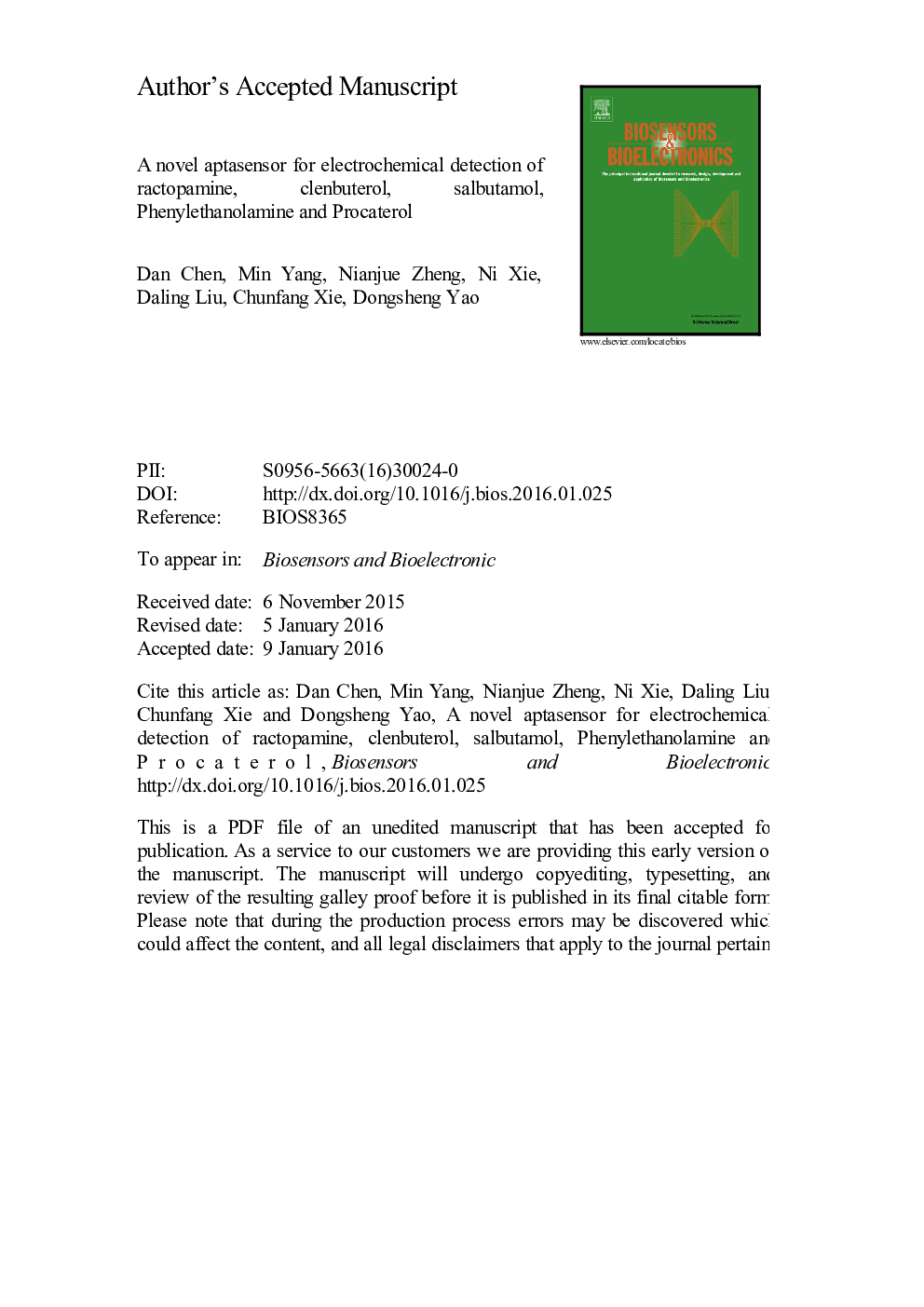| Article ID | Journal | Published Year | Pages | File Type |
|---|---|---|---|---|
| 7230942 | Biosensors and Bioelectronics | 2016 | 18 Pages |
Abstract
β-agonists are phenylethanolamines with different substituent groups on the aromatic ring and the terminal amino group which have the effect of nutrition redistribution and can accumulate in body tissues causing acute or chronic poisoning when consumed. Therefore, it is very important to establish a fast screening method for the detection of several kinds of β-agonists in food safety control. In this study, the aptamer-agonists (AP-Ago) has screened out by Isothermal Titration Calorimetric method. AP-Ago was a single-strand DNA with 22 base-pairs. The dissociation constant (Kd) to phenylethanolamine (PHL) was 3.34Ã10â5 mol Lâ1. The AP-Ago based electrode was constructed by self-assembling on gold electrode. A label-free electrochemical aptasensor was then developed with AP-Ago-based gold electrode, which was sensitive to phenylethanolamine(PHL), clenbuterol (CLB), ractopamine (RAC), salbutamol (SAL) and procaterol (PRO). The detection limits were 0.04 ng/mL (RAC), 0.35 pg/mL (CLB), 1.0 pg/mL (PHL), 0.53 pg/mL (SAL) and 1.73 pg/mL(PRO), respectively, The detection time was 15 min. The reproductivity of the mentioned aptasensor is good with RSD of 2.09%. Comparing with ELISA and HPLC on β-agonists detection in actual sample, this aptasensor is advantage of fewer steps and fast screen-detection of these five β-agonists or their mixtures. This study suggests that the aptasensor can be developed to a rapid screening means with multi-β-agonists (may be one or more) in sample.
Related Topics
Physical Sciences and Engineering
Chemistry
Analytical Chemistry
Authors
Dan Chen, Min Yang, Nianjue Zheng, Ni Xie, Daling Liu, Chunfang Xie, Dongsheng Yao,
